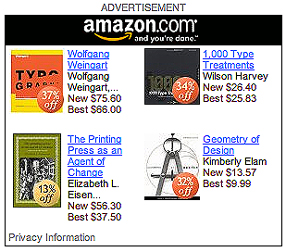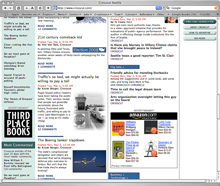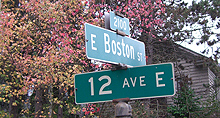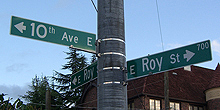We’ve all been reading for quite a while about the future of advertising, where ads would be targeted directly at each individual consumer, based on information collected about our buying habits, our viewing habits, our listening habits, maybe even our philosophical habits. But I hadn’t realized that it was already happening.
Yesterday I dropped by a local website that I check periodically, Crosscut, a Seattle-based news and comment site with some smart thinking and good writing. As I browsed down the home page, I came across an ad from Amazon – and stopped cold. The four books being advertised were all design and printing books. All of them. How likely is that? Would the average reader have a yen for books about graphic design? No, but I would; in fact, my recent browsing habits on Amazon would probably show a lot of books about typography and related subjects. Was this ad tailored specifically to me?

The answer is yes. If you click on the ad’s link to “Privacy Information,” you find that, indeed, Amazon is using their records of what you’ve looked at on their site, and choosing which books to push in their ad based on that. Which means that each Amazon ad on Crosscut (or any other website that hosts such an ad) varies its content depending on who’s looking at it, or more precisely whose computer you’re using to look at it. The future is here.
If you refresh the web page, the Amazon ad changes its contents – but they’re still based on your own recent patterns at Amazon’s own site. The contents even seem to vary by web browser; I was using Safari when I discovered this, but logging on to Crosscut from Firefox brought up an Amazon ad with no obvious relationship to me. (Something to do with how my preferences are set in the two browsers? Probably.)
I’m never surprised by invasions of info-privacy; I’ve read enough science fiction to have been expecting this for a long time. But the potential for embarrassment, at the very least, is large. You log on from somebody else’s computer, and when you get to the Amazon ad, you see a suspicious number of books about…typography! “You, uh, look at a lot of, uh, ‘type,’ don’t you?” you ask your friend. His guilty secret is out, for all the world to see.
Update March 10:
Today’s New York Times has an article on this very subject – how web ads are being targeted directly to individuals – but it conspicuously fails to mention Amazon. A surprising omission.




